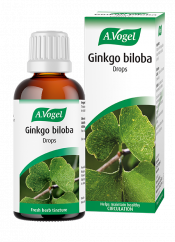How do you know if you have poor circulation?
The circulatory system transports nutrients and oxygen to cells around the body from the gastrointestinal tract and the lungs. At the same time, waste matter from the cells must be removed and excreted via the lungs, kidneys and liver.
Most of the time this happens without incident but, occasionally, circulatory issues can arise. This can be linked to lifestyle factors, as well as various conditions. If circulation does become sluggish, it can lead to problems, including:
- Skin problems
- Cold extremities
- Tiredness
- Dizziness/headaches
- Numbness/pins and needles
- Poor memory
- Swelling
- Varicose veins
- Muscle cramp
1. Skin problems
Dryness, blotches and blemishes on the skin can be caused by a number of things, one of which is poor circulation. The reason for this is simple: slow circulation means the skin doesn't receive enough nutrients and oxygen to keep it healthy.
Also, if blood flow to major organs including the kidneys and liver is poor, they can't reliably get rid of toxins. This can contribute to dry skin, as well as acne and inflammation.
Another skin issue to be aware of is stasis dermatitis. This occurs when blood flow to the legs is hampered, resulting in weakened valves that leak blood into the bodily tissues.
The symptoms of stasis dermatitis include aching legs, swelling, varicose veins, red skin and itchiness.
What can you do?
- Water is really important for healthy circulation, as well as the appearance of the skin, so make sure to keep fluid levels up. A good tip is to keep a bottle handy all the time, that way you can sip throughout the day!
- Compression socks are a good idea if suffering from stasis dermatitis. This can help to manage swelling and improve circulation.
2. Cold hands, fingers, feet and toes
Cold hands and feet (not just in winter time) can be an indication that warm blood is struggling to reach these areas.
Raynaud's disease may also cause chilly fingers and toes, though this is usually accompanied by other symptoms including white fingertips, and is not the result of a circulatory issue. Instead, it can be triggered by cold temperatures, stress and anxiety.
What can you do?
- Take a handwarmer with you when you're out. There are lots of re-useable ones available that can be warmed up in a bowl of boiling water.
- Try Ginkgo biloba. This herb has traditionally been used to support healthy blood flow so can be a great remedy for anyone experiencing cold hands and feet.
3. Tiredness
Frequent tiredness and low energy can be the result of poor blood flow. The heart also has to work harder when circulatory issues exist, and this may add to feelings of lethargy.
If you suffer from high blood pressure, this too can result in feelings of lethargy. Blood pressure refers to the rate at which blood is pumped around the body.
High blood pressure can contribute to tiredness. It is often a side effect of the medications used to treat the condition, plus it is a side effect of the condition itself, due to the pressure it puts on organs such as the brain and heart.
What can you do?
- High blood pressure should always be dealt with by a medical professional so speak to your doctor if concerned.
- If you want to address tiredness and fatigue, Balance Mineral Drink could be of benefit. It contains energy-boosting nutrients including magnesium, in addition to calcium, potassium, vitamin D and zinc.

4. Dizziness and headaches
Regular dizzy spells and headaches can indicate that there is insufficient blood circulating to the brain.
When circulation is healthy, vital nutrients and oxygen are transported to cells in the brain, whilst waste products are removed. If the areas responsible for balance and posture fail to get sufficient oxygen or nutrients, however, they can't function properly, resulting in light-headedness or fainting.
What can you do?
- Move slowly when getting up or sitting down as this is when dizziness is most likely to occur.
- Relaxation techniques can improve circulation. Try yoga, meditation or deep breathing techniques to see if these work for you.
5. Numbness/pins and needles
Frequent numbness or pins and needles (a tingling sensation) in the extremities could suggest that blood supply to the nerves, which relay messages around the body from the brain, is being restricted.
This means that the brain can't receive the information it needs from the nerves, whilst the nerves themselves don't receive sufficient oxygen from the blood.
We sometimes experience this when sitting in a particular position, or when lying in bed at night, as nerves are pinched. If you find this happens more frequently, however, it could suggest there are issues with your overall circulation.
What can you do?
- Keep moving. Lack of activity can contribute to poor circulation so aim to be a little more active throughout the day.
- Avoid tight clothing as this can restrict blood flow - skinny jeans are one of the worst offenders!
6. Poor memory
As already mentioned, bad circulation may reduce the amount of blood that reaches the brain. This can make it harder to concentrate, plus memory problems may develop as well.
What can you do?
- Make sure your brain doesn't get lazy! Keep it working by doing puzzles, reading and exercise.
- Keep yourself organised to avoid feeling overwhelmed. Invest in a diary or use the calendar on your phone to plan your days in advance.
8. Varicose veins
Poor circulation through the veins means blood will struggle to move from the lower half of the body, to the heart. This causes blood to collect in the veins which can cause a problem known as varicose veins.
The symptoms of varicose vein include:
- Bulging/swollen veins
- Restless legs
- Itchy or tender veins
- Aching legs
- Tired legs
- Swollen ankles
- Leg cramp.
What can you do?
- Varicose veins aren't a serious condition but do indicate poor circulation. If you are concerned, have a chat with your doctor.
- Check out our pages on varicose veins. You'll find information on causes, symptoms and treatments.
- Apply Venagel to tired, heavy legs. This contains freshly harvested horse chestnut seeds and is very soothing for uncomfortable legs.

7. Swelling
Swelling and water retention, especially in the feet, ankles and legs, can be caused by poor circulation. This build-up of fluid is known as oedema and, as well as swelling, it can make the skin can appear shiny, stretched, painful, stiff and warm.
Oedema can also occur when blood collects in the area, causing pressure to build. The result is that fluid from blood vessels cannot reach surrounding areas.
The problem can be caused by inactivity, as well as injury, infection, being overweight and poor diet.
What can you do?
- This kind of problem usually goes away by itself after a few days, though you should always see you doctor if it persists any longer.
- Excess weight can cause oedema so look at ways to manage the problem. Read our blog 'Battling body weight – exercise and diet tips' for information.
- Regularly wash, dry and moisturise your feet to keep away any infections.
9. Muscle cramp
Pain, mainly in the arms, legs, feet and hands is yet another sign of poor circulation as oxygen and nutrients cannot reach the limbs properly.
This problem can get worse if you've been sitting in the same position for a while, hence why it becomes more noticeable at night, or if you work a sedentary job.
What can you do?
- Eat more magnesium-rich foods like spinach and nuts. Magnesium can go some way to reducing cramp.
- Cut down your caffeine intake as these can contribute to dehydration, which may worsen cramp. Herbal teas like lemon and ginger make a good alternative, as does our coffee substitute Bambu.










